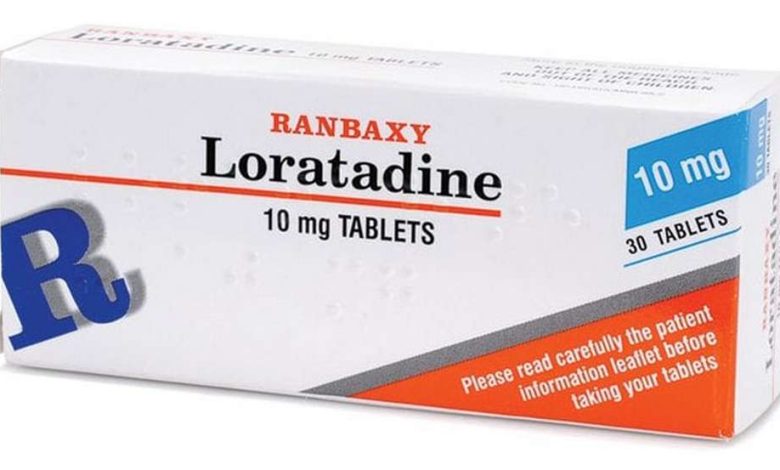Loratadine: instructions for using the medicine, structure, Contraindications

When ATH: R06AX13
Title: Loratadine (Loratadine)
Loratadine: characteristic
White or off-white powder. Insoluble in water, soluble in acetone, alcohol, xloroforme.
Loratadine: pharmachologic effect
Antihistamine, antiallergic, antiexudative, protivozudnoe.
Loratadine: application
Nasal allergy (Seasonal and year-round), pollen disease, allergic conjunctivitis, chronic idiopathic urticaria, pruritic dermatoses (contact allergodermatity, chronic eczema), angioedema, bronchial asthma (adjuvant), allergic reactions to insect stings, pseudoallergy response gistaminoliberatory.
Loratadine: Contraindications
Hypersensitivity, lactation, Children up to age 2 years.
Loratadine: restrictions on use
Pregnancy.
Loratadine: use during pregnancy and lactation
Application is possible only if the expected benefit to the mother outweighs the potential risk to the fetus and newborn.
Category actions result in FDA - B. (The study of reproduction in animals revealed no risk of adverse effects on the fetus, and adequate and well-controlled studies in pregnant women have not done.)
Loratadine: side effects
From the nervous system and sensory organs: headache (12%), drowsiness (8%), fatiguability (4%), in 2% and less - impaired concentration, dizziness, nervousness, anxiety, excitation (children), insomnia, fainting, amnesia, depression, giperkineziya, tremor, paraesthesia, gipesteziya, disfonija, blurred vision, change lacrimation, conjunctivitis, Nictitating spasm, pain in the eyes and ears, noise in ears; very rarely - seizures.
From the digestive tract: dry mouth (3%), in 2% or less - increased appetite, weight gain, anorexia, nausea, changes in salivation, taste disturbance, toothache, stomatitis, vomiting, gastritis, flatulence, dyspepsia, constipation or diarrhea; very rarely - jaundice, hepatitis, hepatic necrosis.
From the respiratory system: in 2% and less - nasal congestion, chikhaniye, dry nose, nose bleed, sinusitis, pharyngitis, laringit, cough, hemoptysis, bronchitis, bronchospasm, chest pain, upper respiratory tract infection, dyspnoea.
With the genitourinary system: discoloration of urine, tenesmus, dysmenorrhoea, menorrhagia, vaginitis, the weakening of the libido, impotence, very rarely - edema.
On the part of the musculoskeletal system: backache, arthralgia, myalgia, leg cramps.
Allergic reactions: hyperemia, skin rash, hives, dermatitis, itch, angioedema; very rare - anaphylaxis.
Cardio-vascular system: hypertension or hypotension, heartbeat, tachycardia; very rarely - supraventricular tachyarrhythmia.
Other: dryness of skin and hair, thirst, asthenia, malaise, fever, chills, photosensitivity, increased sweating, breast pain, weight gain; very rare - alopecia, increasing the size of the chest, erythema multiforme.
Loratadine: interaction
Эritromitsin and ketoconazole (CYP3A4 inhibitors), cimetidine (inhibitor of CYP3A4 and CYP2D6) increase the concentration of loratadine and its active metabolite in the blood. It lowers the level of erythromycin in plasma (15%). It does not potentiate the effect of alcohol on the central nervous system.
Loratadine: overdose
Symptoms: headache, drowsiness, tachycardia. Children weighing less than 30 when receiving kg dose over syrup 10 mg were marked extrapyramidal disorder, heartbeat.
Treatment: induction of vomiting with syrup of ipecac, gastric lavage, appointment of activated carbon; symptomatic and supportive therapy. Hemodialysis nyeeffyektivyen.
Loratadine: Dosing and Administration
Inside, before meals. Adults and children (senior 12 years of age or with body weight more 30 kg) - 10 mg (1 tablet or 2 tsp syrup) 1 once a day. Children aged 2 to 12 years - 5 mg (1/2 tablets or 1 teaspoon syrup) 1 once a day. On the background of hepatic or renal (Cl creatinine < 30 ml / min) failure initial dose 10 mg a day or 5 mg daily.
Loratadine: precautions
It is recommended to cancel the treatment is not less than 1 weeks prior to skin test allergens.
Loratadine: interaction
| Active substance | Description of interaction |
| Azelastin | FMR: synergism. Strengthens (mutually) deprimatsiyu and reduces the speed of psychomotor reactions; Avoid simultaneous use. |
| Carbamazepine | FKV. Against the background of loratadine (as an inhibitor of CYP450 inhibits the biotransformation) increased plasma levels. |
| Ketoconazole | FKV. Inhibits CYP3A4, slows the biotransformation, It increases the concentration of loratadine and its active metabolite in the blood; average AUC increases 3 times, Cmax - In 2,5 times. |
| Erythromycin | FKV. Inhibits CYP3A4, slows the biotransformation, It increases the blood concentration of loratadine and its active metabolite. Against the background of a few drops of loratadine plasma levels. |
